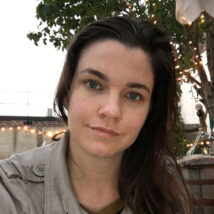
Katie Grace Carpenter
Katie Grace Carpenter is a science writer and curriculum developer, with degrees in biology and biogeochemistry. She also writes science fiction and creates science videos. Katie lives in the U.S. but also spends time in Sweden with her husband, who’s a chef.

All Stories by Katie Grace Carpenter
-
 Physics
PhysicsScientists Say: Lift
An airplane wing’s unique shape creates air pressure differences that result in this gravity-defying force.
-
 Tech
TechScientists Say: Agrivoltaics
This win-win technology means future farmers may produce both food and electricity.
-
 Brain
BrainScientists Say: Neuroplasticity
Neurons in the brain forge new connections and sometimes trim back old ones. This capacity for change allows us to learn new skills and recover from injury.
-
 Chemistry
ChemistryScientists Say: Nucleosynthesis
For this nuclei-forging cosmic process, the Big Bang was just a way to get started.
-
 Earth
EarthScientists Say: Dark lightning
We don't see it, but rare gamma-ray lightning can bolt from stormy skies like regular lightning.
-
 Animals
AnimalsScientists Say: Caecilian
Some of these amphibians can produce a milk-like liquid for their offspring and give birth to live young. And those aren't the only rules these rebels break.
-
 Math
MathScientists Say: Dimension
The simple concept of dimensions has inspired sci-fi creators to wrinkle time and launch into hyperspace.
-
 Chemistry
ChemistryScientists Say: Absorb and Adsorb
These words sound and look a lot alike. But crucial differences lie in how they soak up that spill.
-
 Artificial Intelligence
Artificial IntelligenceScientists Say: Large language model
Large language models, or LLMs, are language-processing systems that underpin advanced AI technologies such as ChatGPT.
-
 Earth
EarthScientists Say: Avulsion
As rivers seek out easier routes to the sea, path reroutes can transform our world. This is ‘avulsion’ refers to in geology. In medicine, the word can describe injuries.
-
 Life
LifeScientists Say: Chimera
What does it mean to be an individual? The genetic mashups called chimeras might challenge your assumptions.
-
 Planets
PlanetsScientists Say: Regolith
This sandlike dust blankets planets, asteroids and other rocky surfaces of our solar system, including our own planet.